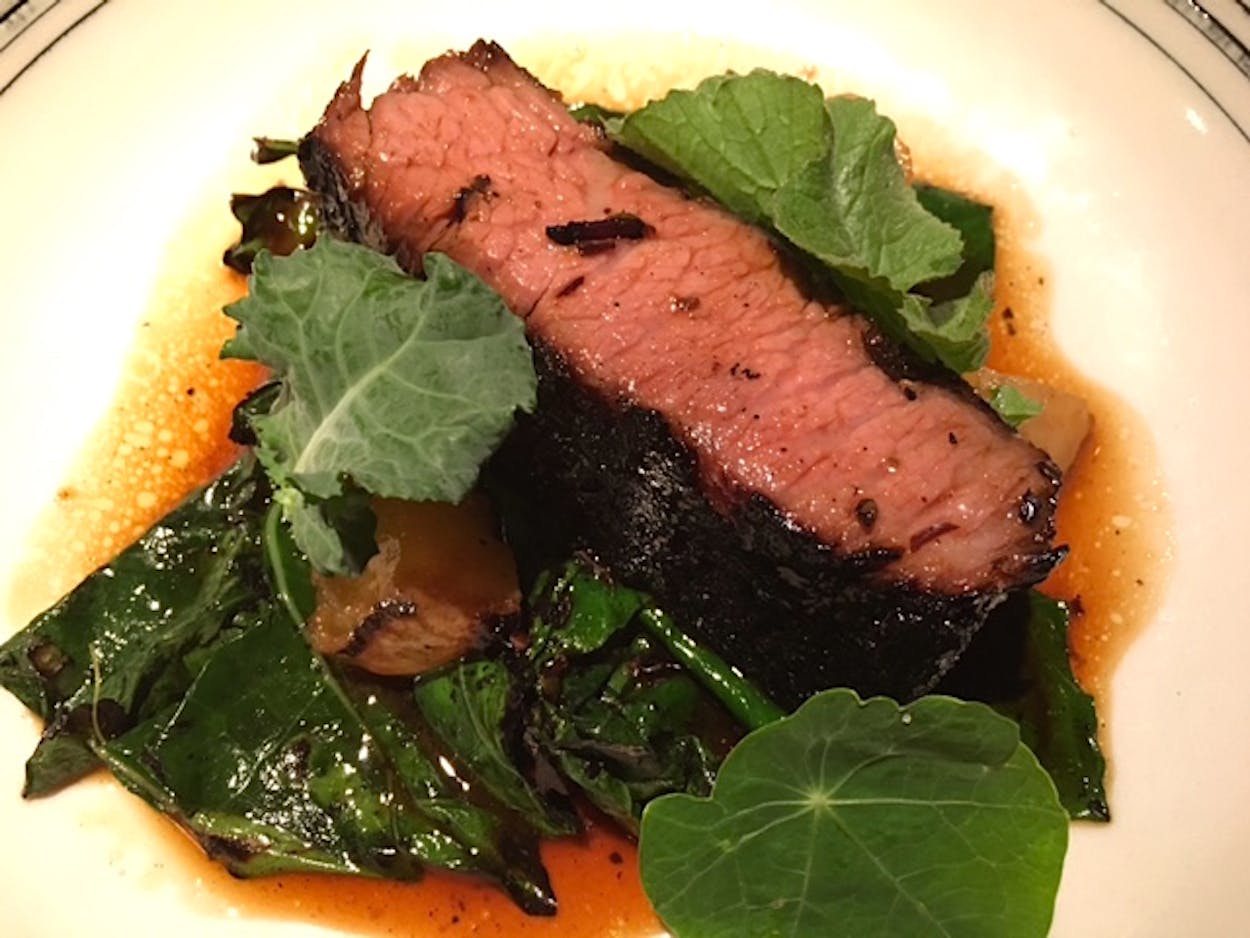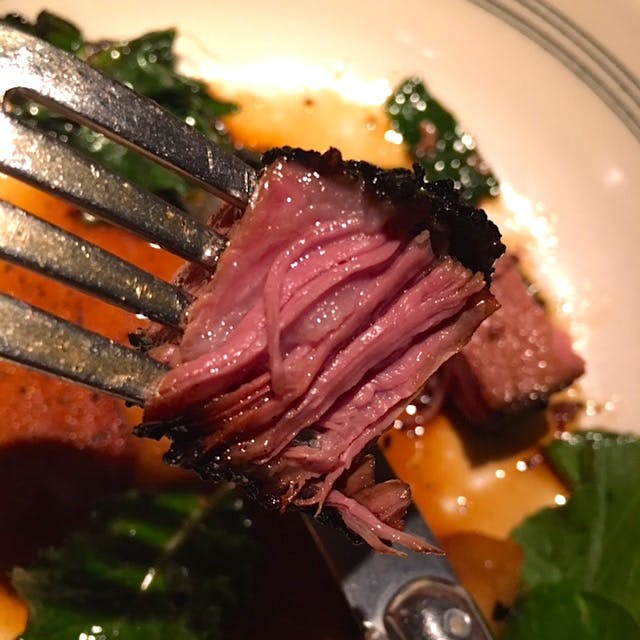There’s little room for variety in the smoked beef ribs you find at Texas barbecue joints—salt, black pepper, and smoke are doled out in big doses on impressively large hunks of beef and bone. They make for an imposing sight, and are a far cry from what anyone would consider refined. Then, along came a photo of the delicate, boneless rectangle of smoked wagyu short rib at Qui in Austin that drew me in for a $70 tasting menu ($115 with wine pairings).
I’ve eaten a lot of beef short ribs, and this one was has a texture unlike any other. It’s tender for sure, but it doesn’t shred apart. Rather than the fat being rendered away from the meat, it’s all there to enjoy. Imagine it as a strip steak injected with warm bacon Jell-O: meaty, yet immensely juicy.
Qui’s chef de cuisine Jorge Hernandez gave me the lowdown on their elaborate cooking process. Qui smokes the salt-and-pepper short ribs with a smoldering log in a combi oven, which controls humidity, at a low temperature for eight hours. But the next step truly ensures consistency: After smoking, they spend three more days cooking sous vide in a Cryovac bag submerged in a warm water bath, cooking the fat without releasing it from the muscle. A final char over a wood fired Aztec grill just before serving revives the good bark on the exterior.
It doesn’t hurt that they start with wagyu beef from Strube Ranch in East Texas. “We buy all the short ribs they have on any given week,” Hernandez told me, which explains why you’re likely to find the smoked short rib on the menu in some form. The next iteration is still in the works (they’ve done more than a dozen versions by now), so this current dish will be around for a least a few more weeks.
Qui’s wagyu shortrib is based on adobo, a dish popular in the Philippines. Adobo is usually made with chicken, but Hernandez wanted to riff on the beef version, or adobang baka, of the Phillipines’s Pampanga province.When making adobo, the sauce’s sweet and sour notes—which work well with the fatty beef—are almost as important as the meat. The smoking part was the Texas twist.
They have to cut the beef into nice rectangles at the restaurant, which leaves plenty of burnt ends. They tried serving them a few times, but the Qui crowd isn’t always clued into barbecue lingo, and some scoffed at the idea. Now those bits of beef are the heart of the sauce. They simmer in beef and chicken stock along with Spanish chardonnay vinegar, garlic, cracked black pepper, and bay leaves. The verdant stuff you see in the photo is a mix of grilled cabbage greens, mustard greens, and the greens from brussels sprouts. I’d say it’s a bit complicated, but Hernandez reminded me that compared to other menu items, “this is one of the simple ones.”
It’s not exactly what you’d find at a Texas barbecue joint, but Hernandez says that’s the point. “We can’t compete with Mr. Franklin down the road. If we were just to serve the meat, customers would be like ‘What else, chef?'” Besides, a regular whole beef rib wouldn’t work so well on a tasting menu. “It can’t just be a good piece of barbecue. It needs to be a really great dish.” I can attest that it’s both.
Qui
1600 East 6th St.
Austin, TX 78702









